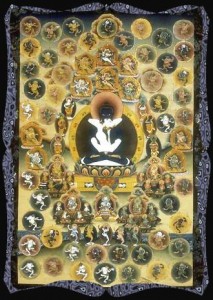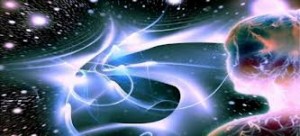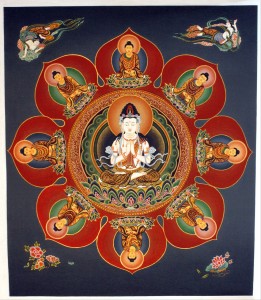The following is an excerpt from a teaching offered by Jetsunma Ahkon Lhamo during a Phowa retreat:
On the third day Ratnasambhava Buddha appears with yellow light. Again, same scenario: too brilliant, scary. At the same time, the blue light of the world of humankind is also manifested, and you will feel very familiar with the blue light of the world of humankind. Although being reborn as a human is considered a very auspicious rebirth, if you have a chance to either go to Ratnasambhava’s pureland or experience that nature that is Ratnasambhava, or be reborn as a human, take Ratnasambhava.
Amitabha Buddha appears on the fourth day with red light. The red is so brilliant and so luminous and so pulsatingly brilliant that we can hardly bear it. And at the same time the yellow light of the world of hungry ghosts will appear. We’re used to yellow light because we’re used to desire. It is vibrationally familiar to us, and it will seem, therefore, like a softer and more welcoming light. Do not follow the yellow light of the hungry ghost realm.
Amogasiddhi Buddha appears on the fifth day with green light. At the same time, the red light of the worlds of animals and demigods are manifested. Again, do not follow the red light. In this case, it is softer, easier to live with, and yet it is Amogasiddha that you want to follow, with the brilliant green light. Always choose that brilliant light.
On the next day, the sixth day, all five Buddhas appear at the same time, with the lights of the six classes of beings. All of the forty-two manifestations of the Buddha that are considered the peaceful deities will then appear. They will be manifested because they are all representative and they are displays of the very elements that are intrinsically within our own nature, so therefore they must appear. It is the nature of the bardo that what appears subjective then becomes objective. What appears to be our own intrinsic nature is seen in an external form. So all of the forty-two peaceful deities will be manifested in our mind, and then they are followed by the fifty-eight wrathful ones. These manifestation scenarios last for about three weeks, unless you take one of the doors. One of the doors would either be, again, recognizing and going toward the Buddha nature in whatever form it appears, or it will be taking one of the doors of the six realms that constantly appear as a more seductive and more familiar light. This goes on for about three weeks.
Now you say to yourself, “When the peaceful deities show up, sounds to me like a good day at the park. I can live with that, being surrounded by all the deities.” But again, it will be unfamiliar; remember that—for a non-practitioner, and even for a practitioner who has not really accomplished their practice very well, or not yet. How are you going to deal when the wrathful deities come in, and what is their nature? What are they? Are the peaceful deities the pleasant and friendly ones and the wrathful deities the punishing ones? Who are the wrathful deities and how should they be understood? How can we avoid being frightened of them? Because they are terrifying. This is what we are going to learn in our next session.
Copyright © Jetsunma Ahkon Norbu Lhamo All rights reserved


